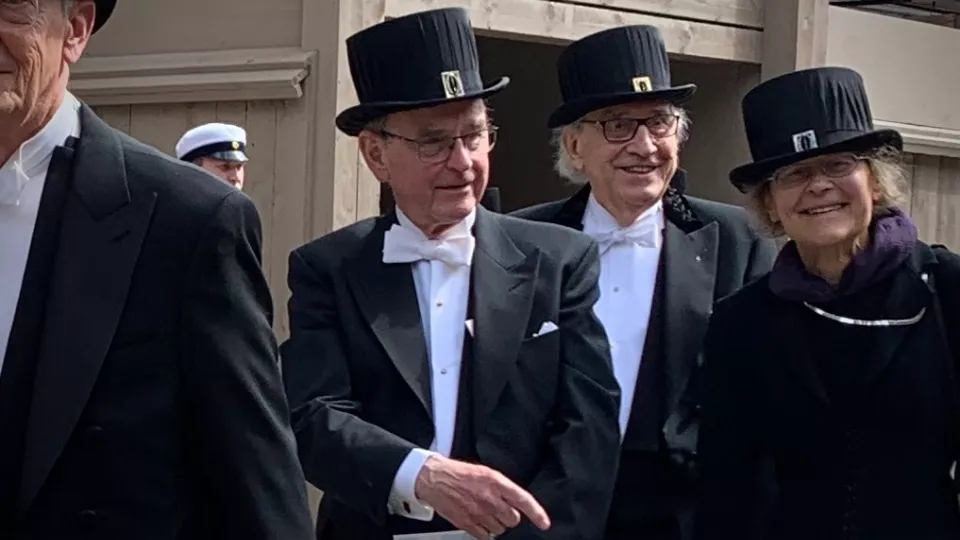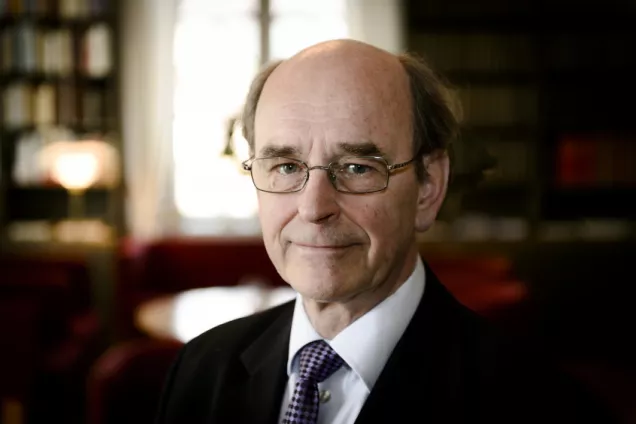It has been more than 50 years since Anders Björklund entered the halls of Lund University - what would later become his academic home - for the first time. Originally from Växjö, Sweden, he began his scientific life as a medical student. “My idea when I started my medical studies was not to go into clinical practice. I was keen to use that as a route to get into research, and it happened quicker than I had anticipated,” noted Anders.
In his second semester, an eager Anders sat in a lecture hall listening to his soon-to-be mentor, Dr. Bengt Falck, lecture on the newly developed Falck-Hillarp method used to identify and study monoamine-containing neurons in the brain and body. It was this chain of events that inspired him to enter the field of neuroscience. “I was instantly intrigued, and at the end of his lecture, he mentioned that those wanting to get acquainted with research were welcome to contact him. I turned out to be the only one in the class interested, and in 1966, I started to work in his lab in my spare time,” explained Anders. “This gave me a quick start and I found that I very much enjoyed microscopy as a way to visualize the brain, a way to make the brain come alive. Over the years, I've come to know the brain, particularly the rat brain, as if it is a familiar place, my own garden in a way.”
It was later during his own research endeavors and by pure accident, that Anders became interested in brain regeneration and the possibilities stem cells presented for new treatments for brain diseases. “Using this new method, we could see that damaged areas of the brain had a capacity of regrowth much greater than what was assumed at the time. We continued to explore this and inspired by findings from our colleagues in Stockholm this led us to pursue the idea of dopamine cell replacement in models of Parkinson's Disease and other neurodegenerative diseases, a line of research that has stayed with me for more than 40 years” revealed Anders.
Research done by Anders, his team, and others in the field, eventually unlocked the idea that damage in the brain could be repaired, and that transplantation using fetal cells could be done in people. In the 1970s, his team pioneered methods for cell transplantation in the brain. This work made it possible for the first-ever cell transplantations among patients with Parkinson’s Disease to be done at the Skåne University Hospital in Lund, led by his former student Dr. Olle Lindvall – sparking interest from all corners of the world.
Sprinting towards a hopeful future: new progress in neuroscience
Anders has gone on to contribute to the field of neuroscience across the following decades, both in terms of scientific discoveries and his mentorship of young scientists. Today, he is a senior professor in neuroscience at Lund University and a member of MultiPark. A center he had a hand in founding nearly 20 years ago. Now, as part of the research group on Developmental and Regenerative Neurobiology, led by his former mentee, Dr. Malin Parmar, he is again helping to plan a new clinical trial that could soon see the transplantation of standardized, laboratory-generated, quality-controlled, dopamine neurons in patients with Parkinson’s Disease.
In many ways, this will mean that he has seen the field come full circle. “One can see that this work began about 40 years ago. There was a very active phase, followed by a setback and a period where we had to go back to the drawing board. During the last decade there has been an upsurge of activity, as new techniques for the generation of transplantable neurons from stem cells have been developed and opened new possibilities to address questions in an entirely new way,” said Anders.
What comes next will be exciting to follow. “In my vision, the possibility to improve the brain’s ability to repair itself could become an established part of medicine,” predicted Anders. “Looking more closely at Parkinson’s Disease, the ultimate value of cell replacement therapy will be when this effort to replace what has been lost, is combined with a parallel approach that can stop disease progression and preserve what is left - this kind of therapy could make a real difference. But this will depend on what kind of setbacks occur along the way and if we end up going back to the drawing board again.”
Another academic milestone down, more to go
For Anders, the finish line of his scientific marathon remains far in the distance. He plans to continue his run to the next checkpoint and while doing so, supporting further developments in the field, and helping to mentor the next generation of neuroscientists along the way. Knowing that this marathon, as like any other, can be tough, he had a few suggestions to make it easier for young scientists still in their first leg of the race:
“First, science is very fruitful - what you give, you get back in abundance. I would encourage young people to establish a viable network and be open to collaboration and interactions. Be open-minded, proactive, and open to sharing experience, knowledge, and information, and you will benefit from the feedback of others.
The second is more obvious: you must be patient and hardworking, and persistent in your work. Failed experiments and setbacks are unavoidable. Somehow the ability to keep going is to be able to handle your frustrations - frustration from the rejection of manuscripts, grant proposals, or an application for a position. These things are part of the life as a competitive scientist. It is not worth getting stuck on setbacks and failures. In a creative and friendly research environment, such as our Stem Cell Center and MultiPark, it is OK to fail and encouraged to go back to the drawing board. It is the persistence of continuing in the pursuit of challenging goals that counts.”
– Anders Björklund, jubilee doctor, and senior professor in neuroscience.



